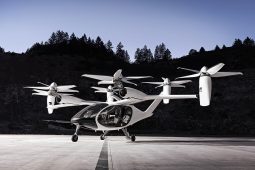An ALS Patient Becomes a Diet Member
In the House of Councillors election of July 2019 two new Diet members were elected who each have severe physical disabilities. One is an Amyotrophic Lateral Sclerosis (ALS) patient and the other has Cerebral Palsy.
Both are barely able to move their bodies and require large electric wheelchairs to get about. The assistance of a carer is also necessary. In particular, the ALS patient is dependent on an artificial respirator and is even unable to speak. In order to communicate with others, he uses his eyes (which are still functional) to indicate characters on a letter board, and with the aid of his caregiver he can be understood.
However, they can both take an active role in society with the aid of their assistants and supportive devices such as their wheelchairs. Essentially, this is much the same as people with extreme myopia who can live without difficulty by using glasses or contact lenses.
In the near future as the technology to support disabled people and their carers improves, I imagine that folks who currently find it difficult to even go out, will find the breadth of their activities expanding.
Serving Cafe Customers from Home with an Avatar Robot
The robot OriHime-D developed by OryLab helps people who find it difficult to go out either because of physical disabilities or mental problems. However, this does not mean it takes them directly outside. With a remote control the user can carry things and make conversation via the robot. It is a kind of avatar that goes out in the user’s place.
OryLab put OriHime-D to work on a trial run as staff at a cafe called DAWN ver.β. Of course, OriHime-D does not work autonomously. ALS patients and others who cannot go out easily operate the robot from their own home or other locations and customers are served through the medium of OriHime-D.
OryLab has also developed voice communication technology for ALS patients who cannot speak. The system integrates OriHime eye a text entry tool operated by eye movements, with the small remote controlled robot Orihime, and Toshiba Digital Solutions’ synthesized voice system “coestation”.
Using this system, an ALS patient can record their own vocal data while they are still capable of speech, and after their ability to speak has been lost they will still have the option of communicating with their own voice.
Daily Life Support Robots Developed by Toyota
Toyota Motor are developing a Human Support Robot (HSR) that can be useful in various aspects of day-to-day life.
HSR supports basic activities such as picking up and carrying objects, and so can assist in the activities of the elderly or disabled as their physical abilities deteriorate. HSR itself is a Robot Platform coordinated with a multipurpose control system, which can be used to perform a great variety of services.
Based on HSR, Toyota are working together with the artificial intelligence (AI) and deep learning technology development company Preferred Networks to perfect a service robot that can learn and perform diverse tasks within a living environment.
Honda Developed an Exoskeleton for Walking Practice
The support device developed by Honda Motor is the Honda Walking Assist Device.This walking practice device is targeted at people who cannot walk smoothly whether because they are elderly or as the result of a cerebral infarction.
This is a kind of “exoskeleton suit” or “powered exoskeleton” which is strapped onto the waist and thighs. As the person equipped with this device begins to walk, a motor assists the legs’ movement and maintains an efficient left-right balance to support a good gait. Continued training with this equipment appears to promote walking-related neuromuscular recovery.
Toyota have also developed a similar walking training device called Welwalk.
Exoskeletons also Reduce the Caregiver’s Burden
Recent technology also assists caregivers. CYBERDYNE have developed cyborg equipment called HAL. This is an exoskeleton suit, which rather than assisting disabled people with declining walking ability, helps their caregivers by reducing their physical burden.








